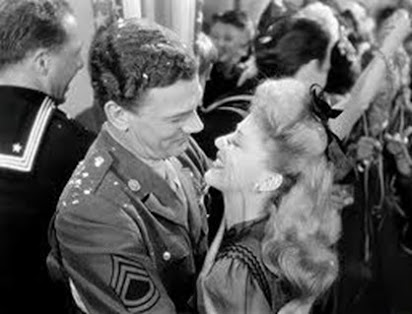 Watchingwell
Watchingwell
Curated classic films
How to cope? For me, film offers two different escape routes. One seems to be not an escape but immersion in a world so bleak that your own seems slightly more optimistic. I am referring to the film noir, French, for black film, both in the dark world their stories take place, and also in their appearance, mostly black and white. Lately, I have seen, for the first time, four films, from the forties, where the noir was born, thanks to the noir night on Turner Classic Movies, that match my cynicism.
The Phantom Lady (1944)
Directed by Robert Siodmak, Ella Raines is the devoted secretary who is determined to clear her boss, played by Alan Curtis, of the charge of murdering his wife. She, basically, carries the film, even when the boss's best friend, Franchot Tone, offers to help. Thomas Gomez plays the reasonable police detective. Oh, the phantom lady of the title refers to the boss's alibi -- an unknown woman with whom he spent the evening in question.
Pitfall (1948)
Bored insurance agent and family man, Dick Powell, makes the mistake of getting involved with Lizabeth Scott. She has a boyfriend in prison and a freelance insurance agent who is frighteningly obsessive about her, played by who else but Raymond Burr. Jane Wyatt plays Powell's wife who resents being kept in the dark about the dangerous situation they are in. Directed by Andre De Toth.
So here's Franchot Tone again. This time as a private detective hired to find the client's wife. Only her sister, played by Janet Blair, doesn't recognize the woman in the picture the client has supplied, and there are two other women played by Janis Carter and Adele Jergens who you need to keep track of. Then there's the secretary, the always entertaining Glenda Farrell. At some point, we meet John Ireland and Raymond Burr, again -- and many other familiar faces from the noir world. You may not be able to keep up with the plot, but it's entertaining in a weird way. Directed by S. Sylvan Simon.
The other escapist films are not new to me -- they are films I have rejected in the past as not worth my time. These are the totally strange movies starring Esther Williams; strange because a "dramatic" script is constructed around a water venue so that Ms. Williams, the champion swimmer, can swim. But, this seems to be just what the doctor ordered at the lowest point of gloom. They did not in any way require my emotional involvement. I just watched and in the process of doing so, I realized what pretty pictures they were. Esther was made for technicolor and vice versa.
This film is ostensibly about the plot Esther and her friend, Paula Raymond hatch to get Paula's boss, John Lund, to see Paula as wife material and not just a secretary. But most of it takes place in Sun Valley, at a resort with phenomenal entertainment, like Lena Horne, Van Johnson, Eleanor Powell. Not to worry, however, there are swimming production numbers with underwater scenes that we are to believe the resort guests are watching. Everyone looks lovely. Directed by Robert Z. Leonard.
The story here is the weakest part of the film with a plot that derives from mistaken identity -- how original! Esther's character, a swimsuit designer, tries to keep her sister, played by Betty Garrett from playboy, Ricardo Montalban, when all along, Betty is in love with Red Skelton, and expresses same in Academy Award winning song, Baby, it's Cold Outside. Lots of good-looking swimsuits and a great aquatic finale. Directed by Edward Buzzell.
So, take a look at whatever works for you. Remember to avoid really good movies -- you don't want to be emotionally triggered. Stick with these characters stuck in dismal depths or in hollow heights of eye-candy.
Ginger Rogers and David Niven looking lovely in Bachelor Mother (1939) have a great New Years Eve date. Directed by Garson Kanin.
If it's poignancy that moves you, Ginger Rogers stars again, this time with Joseph Cotten in a tender tale of two troubled people who meet over the holidays in I'll Be Seeing You (1944). Directed by William Dieterle.
Good viewing to all!
























No comments:
Post a Comment